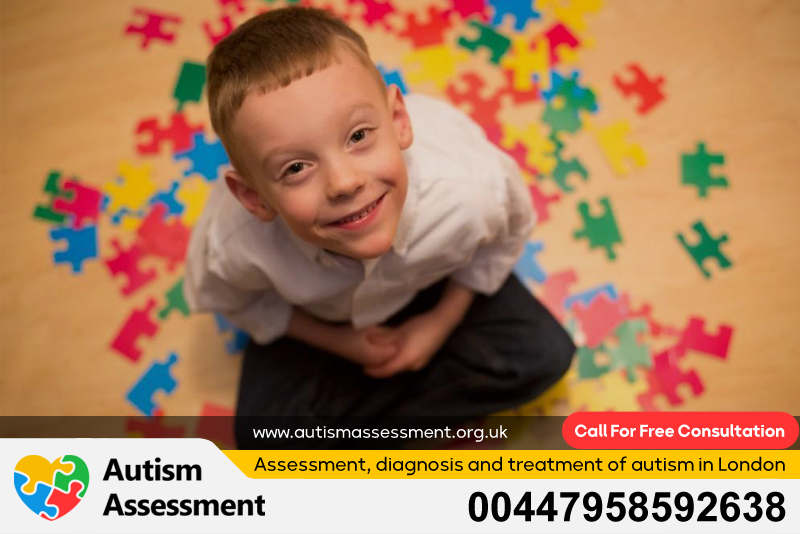Autism Spectrum Disorder (ASD) and Narcissistic Personality Disorder (NPD) are two psychological conditions that, while distinct in their characteristics and underlying causes, can sometimes appear to share certain behavioral traits. This can lead to confusion and misdiagnosis, particularly among individuals who may display social challenges or emotional dysregulation. By exploring the key features of both autism and narcissism, the nuances of their symptoms, and the importance of accurate diagnosis, we can better understand how to support individuals with these conditions effectively.
Autism Spectrum Disorder is primarily a neurodevelopmental condition that affects how individuals communicate, interact socially, and experience the world around them. Symptoms of autism typically emerge in early childhood and can include difficulties in understanding social cues, forming relationships, and engaging in reciprocal social interactions. Individuals with autism may have intense interests or focus on specific topics, as well as display repetitive behaviors or routines. These characteristics can lead to significant challenges in social settings, making it hard for individuals on the spectrum to connect with peers and navigate everyday situations. It is essential to recognize that autism is not characterized by a lack of empathy; rather, individuals with autism may experience empathy differently or have difficulty expressing it in socially normative ways.
In contrast, Narcissistic Personality Disorder is a mental health condition that primarily revolves around an inflated sense of self-importance, a deep need for admiration, and a lack of empathy towards others. Individuals with NPD may believe they are superior to others and expect special treatment or recognition, often without recognizing the feelings or needs of those around them. This disorder can lead to a range of interpersonal difficulties, as narcissistic individuals may exploit relationships to bolster their own self-esteem and may react negatively to criticism or perceived slights. Importantly, individuals with narcissism often have a fragile self-esteem and may resort to defensiveness or aggression when challenged. Understanding this context is crucial for recognizing how narcissism differs fundamentally from autism.
The overlap in some behaviors exhibited by individuals with autism and those with narcissism can lead to misconceptions. For instance, both groups may struggle with social interactions; however, the motivations and underlying reasons for these difficulties differ greatly. An individual with autism may find social situations overwhelming due to sensory sensitivity or lack of social skills, leading to withdrawal or awkwardness. In contrast, someone with NPD may appear socially competent but may engage in relationships primarily for self-serving reasons. They may manipulate social interactions to maintain their self-image or receive admiration rather than foster genuine connections. This critical distinction underscores the importance of differentiating between the two conditions during the diagnostic process.
When diagnosing autism versus narcissism, mental health professionals utilize specific criteria outlined in diagnostic manuals like the DSM-5 (Diagnostic and Statistical Manual of Mental Disorders). A comprehensive assessment involves gathering information from multiple sources, including interviews, behavioral observations, and reports from family members or caregivers. Clinicians must carefully consider the individual’s developmental history, the context of their behaviors, and the environmental factors that may contribute to the observed difficulties. Accurate diagnosis is essential, as it informs appropriate treatment strategies and interventions tailored to the individual’s unique needs.
Treatment approaches for autism and narcissism also differ significantly. Individuals with autism often benefit from therapies designed to enhance communication skills, social understanding, and emotional regulation. Applied Behavior Analysis (ABA), Social Skills Training, and various therapeutic modalities focused on sensory integration can be effective in helping individuals with autism better navigate social situations and manage their anxieties. The goal of these interventions is to promote independence and improve overall quality of life while recognizing and respecting the individual’s unique strengths and challenges.
On the other hand, treatment for Narcissistic Personality Disorder often involves psychotherapy aimed at increasing self-awareness, empathy, and healthier coping mechanisms. Cognitive Behavioral Therapy (CBT) can be particularly effective in helping individuals with narcissism recognize and challenge unhelpful thought patterns that contribute to their maladaptive behavior. Therapeutic work focuses on understanding the underlying insecurities driving narcissistic behaviors and fostering more balanced, compassionate relationships with others.
Support systems play a crucial role in the lives of individuals with either autism or narcissism. Families, educators, and mental health professionals should work collaboratively to create environments that promote understanding and acceptance. For individuals with autism, this includes establishing structured routines and providing clear expectations to reduce anxiety. For those with narcissism, creating opportunities for honest feedback and fostering an atmosphere of genuine communication can contribute to healthier interpersonal dynamics. Education and awareness among caregivers and peers about both conditions can facilitate acceptance and support.
In conclusion, autism and Narcissistic Personality Disorder are fundamentally different conditions, each with unique characteristics and implications for interpersonal relationships. Understanding the distinctions between the two is essential for accurate diagnosis and effective treatment. By fostering awareness and compassion, mental health professionals and society at large can better support individuals navigating the complexities of autism and narcissism. As we continue to seek understanding in these nuanced areas, we can help create a more inclusive and informed environment for those affected by these challenging conditions.



